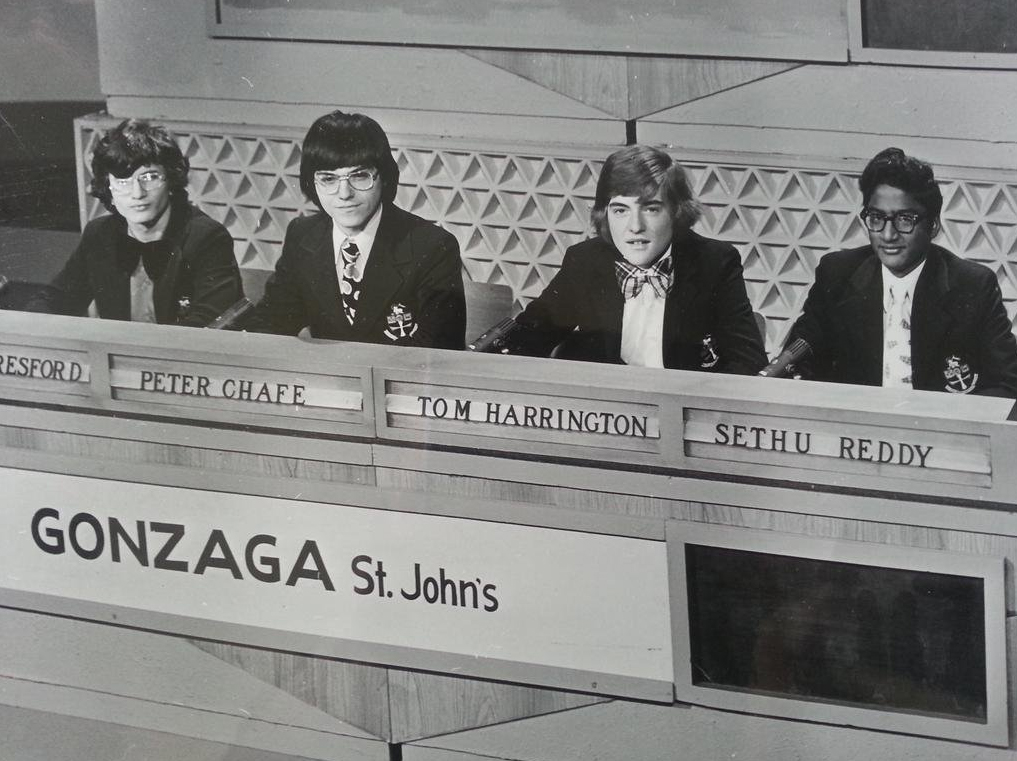’74 was a time in the history of Newfoundland and Labrador that can best be described as one of transition. Confederation was only 25 years old. As such, we Newfoundlanders were still becoming accustomed to the idea of being Canadians, something so many of us still grapple with to this day.
A National Stage
It is in this backdrop of transition and ever evolving identity, one that saw a cultural renaissance of sorts in music, literature and everything arts, that a Newfoundland team rocked and jaw-dropped on a national stage, proving even the most dedicated doubters wrong.
Acclaimed author and playwright Joan Sullivan dives into that period in history in her latest work Game, which chronicles the unlikely rise of Gonzaga High School to the championship match of the 1974 Reach For The Top competition, an event that captured popular attention for decades across Canada. The Herald first asks Sullivan the appropriate question. Why now? Why delve into an intriguing yet somewhat unheralded moment in Newfoundland history some 44 years after the fact?
“There was a piece in The Telegram on the anniversary of the game a few years ago. I was just so incredibly taken by the photo, which is the moment Gonzaga won the game,” she explains. “It looks so exuberant. I got more interested in the story. I realized right away it was 25 years from Confederation and these were the new generation of Newfoundlanders who were Canadian.”
Championship Run
As part of Newfoundland’s 25th anniversary of Confederation, the annual Reach For The Top Championship games were relocated to St. John’s. The final two teams came down to defending national champions Archbishop Highschool in Edmonton, Alberta, and the hometown favourites Gonzaga High School. They aimed to do what, at that time, was seen as unthinkable and impossible. No team from Newfoundland had ever captured the title. To do it on home soil would be something different entirely, a moment of Newfoundland pride in an era of change and strained identity. Call it a galvanizing moment, but it just might have been what we needed.
“It was a time when people had preconceived notions of what a Newfoundlander was,” Sullivan explains. “If you were on the mainland and you said you were from Newfoundland people would just laugh, like you’re a Leprechaun or something. I wish the attitude would have changed more than it is, but it has changed a fair bit. It is something that we reckon with, that’s for sure.
“There was a bit of a mystery about the place,” she adds. “I don’t think we were a huge tourist destination like we are now. Everyone is dying to get here, breaking their necks to get around Gros Morne or whatever wonderful part of the province they want to see. I just don’t think that was the state of affairs then. I think we were an unknown quantity as well.” For Game, Sullivan extensively researched the time and place in which the improbable championship run was set. The major players? They’re all covered here: John Perlin, Edward Roberts, Bill Rowe, John Crosbie and Gonzaga’s squad; Peter Chafe, Tom Harrington, Seth Reddy and Gerry Beresford, who embraced the underdog role so well.
Local Underdogs
“They were the underdogs. No one expected them to win, including themselves,” Sullivan says. “Symbolically, they were much younger than the other players, because at that time we only had grade 11. People like me were 16 going to MUN. The other people were in grade 12 and 13 … The Alberta team really did think they were going to win.”
 For a bit of context, Reach For The Top was a national institution at the time, something that united players and curious observers from coast to coast.
For a bit of context, Reach For The Top was a national institution at the time, something that united players and curious observers from coast to coast.
“At that time everyone was really into Reach For The Top,” Sullivan recalls.
“They tried out for it, tried out for the teams and watched the games. It’s something everybody could be a part of.”
Reach For The Top
Reflecting with 40 years of hindsight, Reach For The Top did much to help the fledgling province of Newfoundland find itself. The fact that the competition, which is a far cry from its former glory, is not as widely known and accepted today, is lamented by more than just Sullivan.
“People were so loyal to that game. It really was a part of your community and reflected your community back to you and that’s gone now,” she says. I don’t think the Reach For the Top that exists now is national and I don’t think any Newfoundland teams participate.”
For more on Joan Sullivan and Game visit breakwaterbooks.com and pick it up wherever local books are sold.
